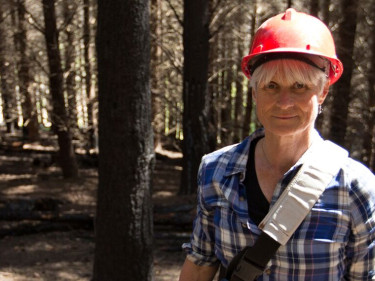Reducing your risk
Owners/managers of forests are responsible for reducing the risk of fire that can threaten their investment. To reduce this risk:
- Plant a buffer of less easily burned native species that is 10 to 20 metres wide.
- Create firebreaks on ridgelines or property boundaries.
- Prune lower branches and clear the pruning’s from roadsides.
- Keep weeds down on forest margins.
- Clear gorse near or under your trees.
- Remove or bury all rubbish.
- Avoid possible ignitions.
Understanding what can cause fires to start and spread in your forest will help you reduce the risk. Ensure you:
- Keep vegetation clear of power wires.
- Inform contractors of any gas pipelines and contact the pipeline owner.
- Avoid planting on sites where there may be pockets of natural gas.
- Do not use explosives in elevated fire danger periods.
- Do not use tin lids or other reflective surfaces.
Operate machinery safely
Bulldozers, excavators, trucks, chainsaws, disc grinders and welding equipment etc, are all used in forestry management and are all possible source of fire ignitions.
Ensure you:
- Clean and maintain machinery.
- Ensure no oil or fuel leaks.
- Use turbo-charged machinery or fit it with a spark arrester.
- Clear the radiator of grass and fine twigs etc.
- Have a fire extinguisher on board or a self-activating fire extinguisher, if possible.
- Ensure exhausts are not ported towards fine dry fuels.
Safetree
Safetree is a forest industry-wide, co-operative. Its mission is to reduce the number of deaths and injuries in New Zealand forests.
Sponsored by the forest industry and government agencies, Safetree™ is part of the Government’s commitment to reducing serious harm and fatalities in New Zealand’s workplaces by 25% by 2020.
Safetree™ provides resources to people at all levels in the industry to remind them how to do their jobs safely. Safetree™ targets information at forest owners and managers, contractors, foremen, head breaker outs, breaker outs, tree fallers, and hauler and machine operators.
Being prepared for fire
If a fire starts, it must be put out as soon as possible, before it spreads. You can help by making some preparations in advance. You need to ensure you have:
- Easy and safe site access – for a large truck about 4 m wide and 2.5 tonne weight to drive and turn on roads and bridges.
- Good signage – signs at entrance points and property boundaries to direct firefighters, including RAPID numbers.
- Adequate and accessible water – streams, rivers, ponds, dams or tanks.
Fire Response Schedule
Prepare a Fire Response Schedule and send it to Fire and Emergency and a helpful neighbour. The schedule will tell them what to do, who to contact, and identify access, water supplies, and hazards for firefighters.
Ensuring neighbours and visitors are fire safe
- Having a good relationship with neighbours and visitors to your property is valuable. They will call 111 and notify Fire and Emergency NZ if they spot a fire on your property.
Discuss fire safety with visitors
- If people visit and use your forest for recreation, discuss fire safety with them. Encourage responsible and sensible people to use your forest area.
- If you have a contractor working in your forest, ensure their contract specifies conditions for the safety of others, themselves and the forest.
Keep ‘Fire Starters’ out of your Forest
- Ensure your property is secure so that people are discouraged from trespassing and using your property for illegal activities like burning out a stolen vehicle or cultivating drugs.
- Consider having locked gates, fences or barriers, such as drains, concrete blocks or large trees across potential entry points. You can if necessary, use the Trespass Act 1980. Discuss this option with your local Police Officer.
Insurance
- Neighbours, recreational visitors and contractors should have insurance in case they are responsible for causing a fire on your property that needs suppressing.
- Read: Vero Market Update: Drought - Fire Liability Risk; March 2013.
Call 111 if a fire starts
When calling 111, make sure you tell the operator:
- Your name, RAPID number, contact phone number and where the fire is.
- What is burning and the relevant rural fire authority.
- Extent of the fire in hectares and the type of terrain including any hazards.
- The closest brigade or volunteer rural fire force that is available to deal with the fire.
- The quickest route and the quickest roads for firefighters to take to get to the fire.
- You may also advise your neighbours, mark access routes for fire vehicles, mark water supplies, move livestock, remove or identify any barriers or hazards for the firefighters.




